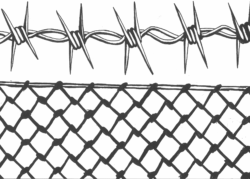Rich and friendless drivers who enviously watch vehicles in the carpool lane blaze by during their rush hour crawl on I-495 will soon get their turn to hop into the fast lane. Congestion in the Metropolitan D.C. area is horrible, consistently ranked third of 85 U.S. urban areas in annual delays per traveler by the Texas Transportation Institute. To mitigate traffic, the Virginia Department of Transportation will likely soon charge a toll for non-high-occupancy vehicles to drive in carpool lanes. Despite concerns over social stratification, the new HOT lanes (High-Occupancy/Toll) will help clear congestion for everyone and boost revenue for public transit through tolls.
The tolls, collected electronically via E-ZPass, will be continually adjusted according to traffic density, ranging from 10 cents during light traffic to $1 during heavy traffic hours, but could rise even higher during gridlock, according to VCOT Spokesman Jeffrey Caldwell.
A main concern is that the HOT lanes would be “Lexus lanes,” where wealthier drivers who can pay the tolls would benefit most. HOT lanes will likely create a class system on the highway: the rich with more money than time cruise past the poor masses. While this is true, putting more cars in the current carpool lanes would benefit all drivers by reducing traffic in the regular lanes.
“If you move to HOT lanes, there’s no effect of Lexus Lane because all classes benefit. HOT lanes leave people an option not to pay if they don’t want to,” said Elena A. Safirova, a fellow at Resources for the Future, an environment and energy think-tank.
Moreover, if the VDOT uses a portion of the tolls to subsidize public transit, which is utilized more by lower-income people, benefits will be felt by many more than just the rich.
Another concern is that allowing single drivers to use carpool lanes will discourage carpooling, thereby increasing pollution. However, a study by Resources for the Future found that drivers in cities with HOT lanes used longer side-road routes less and returned to the more direct highway route. Constant speed highway driving produces less pollution than accelerating and decelerating on side roads.
Traffic in the D.C. metropolitan area must be reduced, and building more roads is an expensive and environmentally damaging solution. Converting carpool lanes to HOT lanes would make better use of the currently under utilized HOV lanes.
The new policy will also boost funds for public transportation and make everyone’s commute a little smoother.




